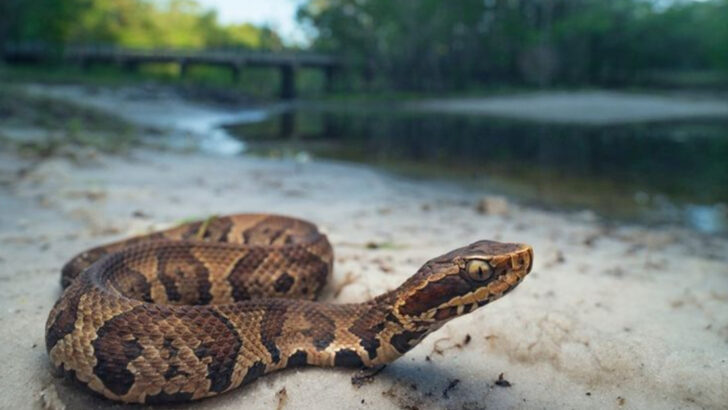The wild doesn’t care how prepared you think you are—venom does its damage fast.
Out in the woods, it’s not always the big predators you need to fear. Sometimes it’s the silent, slithering, stinging ones that pose the biggest threat. The ones hiding under logs. Clinging to trees. Buried just beneath the trail.
They don’t want trouble. But if you step too close, trouble is exactly what you’ll get.
Whether it’s a rattlesnake coiled in the brush or a spider tucked inside your boot, venomous creatures are out there—quiet, patient, and potentially deadly.
Before you head into the wild, meet the 15 venom-packed animals you might cross paths with—and learn how to avoid becoming their next mistake.
Eastern Diamondback Rattlesnake

The Eastern Diamondback Rattlesnake, with its iconic diamond patterns, is a creature of stealth. Its natural habitat spans the sandy forests of the Southeastern USA.
Camping near these areas requires caution, as this snake can blend seamlessly into the environment. Its rattle, often the first warning sign, is followed by a defensive strike if provoked.
This rattlesnake’s venom can cause severe harm, requiring immediate medical attention. Known for its territorial nature, it often avoids human interaction. However, accidental encounters can occur. Did you know? It’s the largest rattlesnake species in the United States.
Black Widow Spider
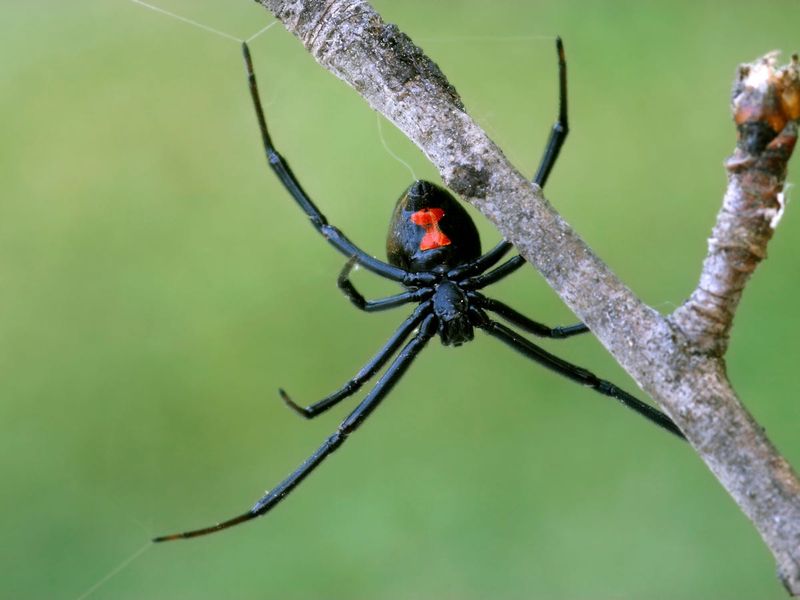
Hidden in woodpiles and dark corners, the Black Widow Spider is notorious for its venomous bite. Its glossy black body and red hourglass marking are unmistakable.
Although its bite rarely causes fatalities, it can lead to severe pain and muscle cramps. Often found in sheds or under logs, campers should be vigilant. This spider tends to avoid confrontation, preferring secluded spots.
A quirky fact: Despite their fearsome reputation, only female black widows bite humans. This arachnid plays a crucial role in controlling insect populations.
Brown Recluse Spider
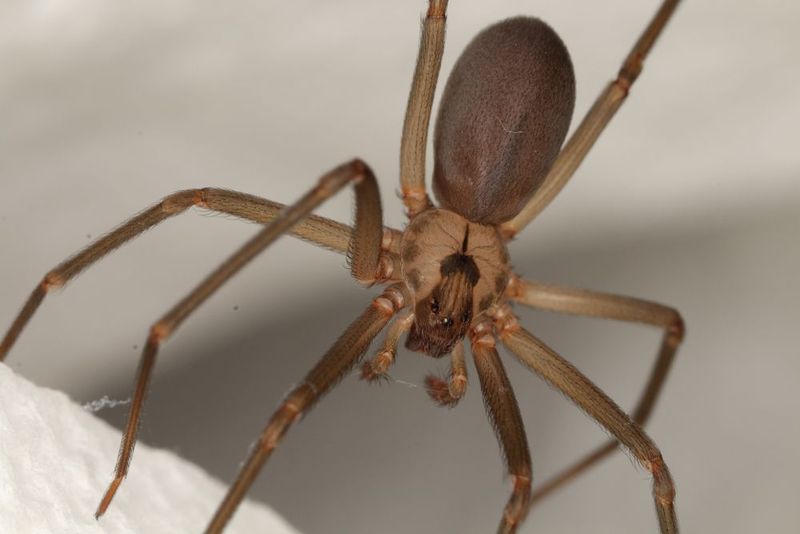
The Brown Recluse Spider, with its violin-shaped marking, is a master of disguise. Preferring undisturbed areas, it often resides in basements or unused camping gear.
A bite from this spider can lead to necrotic skin lesions and requires prompt medical care. Though reclusive by nature, it can become a hidden threat when disturbed.
Interestingly, these spiders are known for their resilience and can survive months without food. While often feared, they contribute to the ecosystem by preying on other insects.
Coral Snake
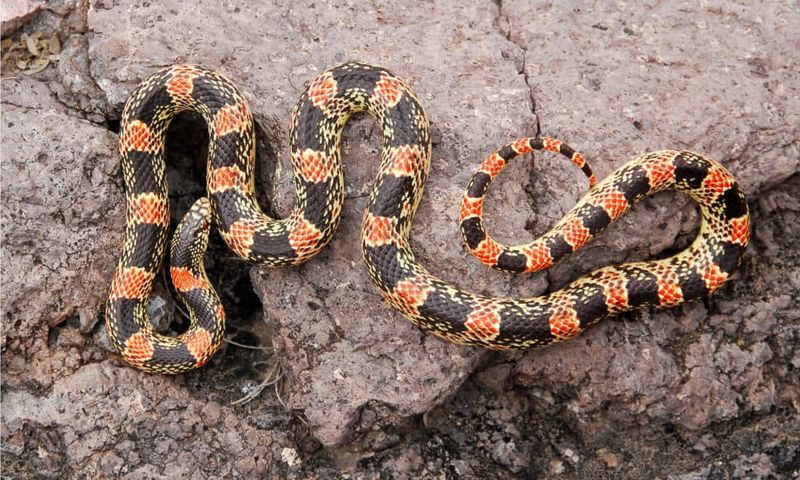
“Red on yellow, kill a fellow” warns of the Coral Snake’s deadly potential. Its vivid coloration is both a warning and a disguise among fallen leaves.
Occupying the forests of the Southern USA, this snake is elusive and rarely seen. Its venom affects the nervous system, demanding immediate treatment.
This snake’s timid nature means it rarely bites unless handled or threatened. Surprisingly, Coral Snakes are beneficial to their environment, controlling small rodent populations.
Copperhead Snake
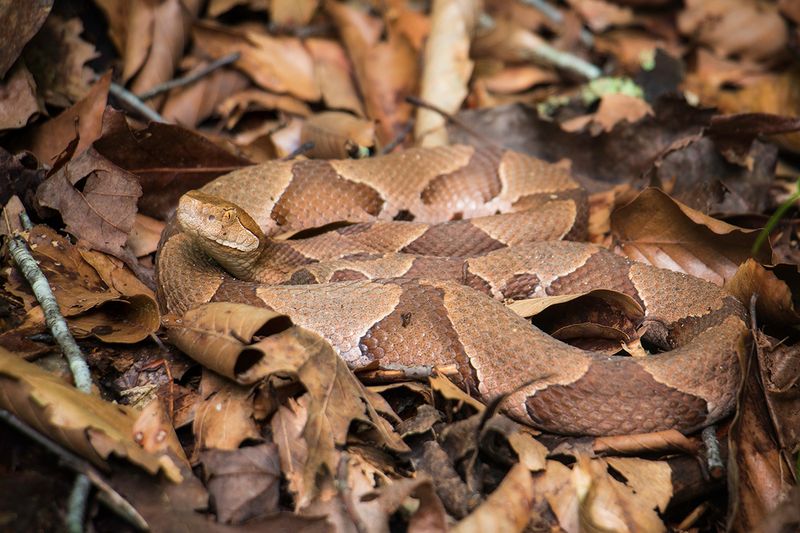
The Copperhead Snake is a master of camouflage. With its coppery head and distinct hourglass pattern, it blends into leaf-strewn forest floors.
Found in the Eastern USA, it often basks in the sun near hiking trails. Though its venom is not typically fatal, a bite can cause significant pain and swelling.
Copperheads are generally reluctant to bite and give a warning strike. A fun tidbit: Juvenile Copperheads use their bright yellow tail tips to lure prey.
Mojave Rattlesnake

In the arid deserts of the Southwestern USA, the Mojave Rattlesnake reigns supreme. Recognizable by its greenish hue and potent venom, it’s a creature to respect. This rattlesnake tends to be more aggressive compared to others.
Its venom, a cocktail of neurotoxic and hemotoxic components, requires urgent medical attention. Despite its fierce appearance, it plays a vital role in controlling the rodent population.
A peculiar fact: The Mojave Rattlesnake has the most toxic venom of any rattlesnake in North America.
Western Diamondback Rattlesnake
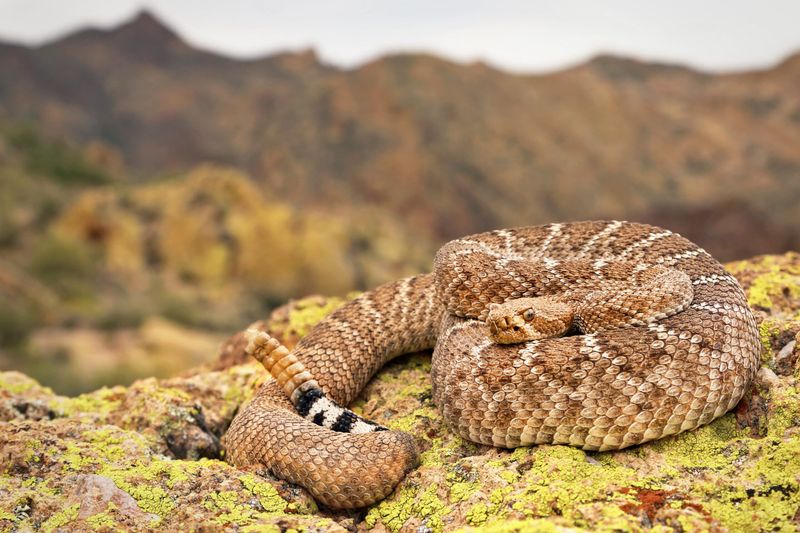
The Western Diamondback Rattlesnake is a symbol of the American desert. Its bold diamond patterns and rattling tail make it easily identifiable.
This formidable snake is often seen basking on rocky outcrops in the Southwestern USA. Its venom, while not the most potent, can still cause severe reactions.
Known for its defensive nature, it prefers to stand its ground rather than flee. Did you know? This rattlesnake is famously featured in Western folklore and cowboy tales.
Gila Monster
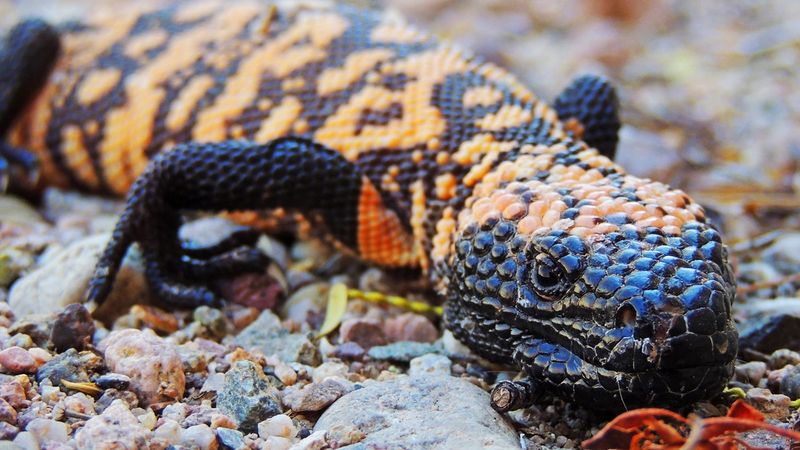
With its vivid orange and black patterns, the Gila Monster is both mesmerizing and dangerous. This lizard, native to the Southwestern USA, is one of the few venomous lizards in the world.
Its bite is painful and can lead to swelling and nausea. However, it’s not typically life-threatening. The Gila Monster is shy, spending most of its time underground.
Intriguingly, it can go months without food, thanks to its ability to store fat in its tail.
Cottonmouth Snake
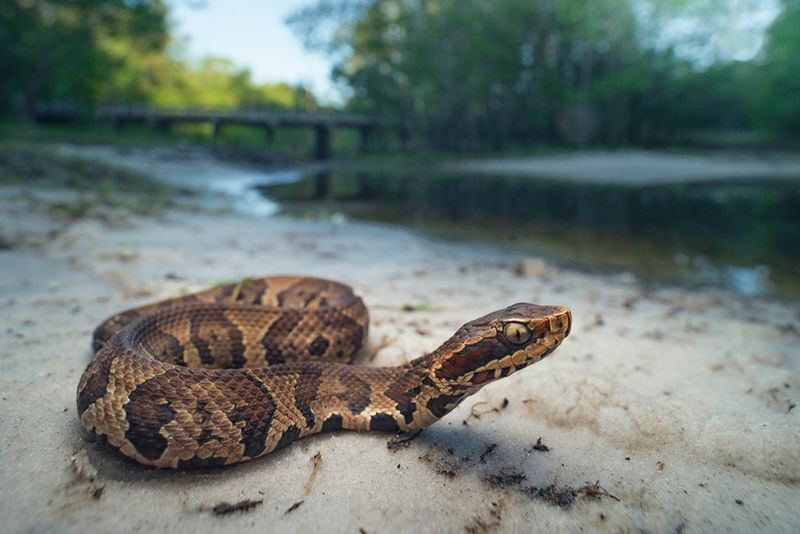
The Cottonmouth, or Water Moccasin, is notorious for its defensive display. When threatened, it reveals a striking white mouth.
Inhabiting the wetlands of the Southeastern USA, this snake is adept at both land and water navigation. Its venom, though rarely fatal, can cause severe tissue damage.
Despite its fearsome reputation, the Cottonmouth often prefers retreat over confrontation. Uniquely, it can sense vibrations in the water to hunt prey.
Scorpion
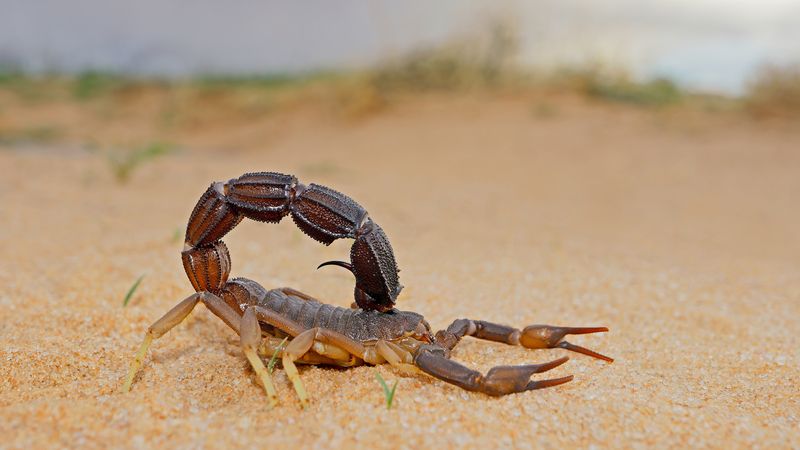
Under the cover of night, scorpions come to life in the desert. These arachnids, with their pincers and venomous tails, are both fascinating and frightening.
Many scorpion species inhabit the Southwestern USA, with the Arizona Bark Scorpion being the most venomous. Its sting can cause intense pain and requires medical attention.
A quirky detail: Scorpions glow under ultraviolet light, making them easier to spot during nighttime explorations.
Puss Caterpillar
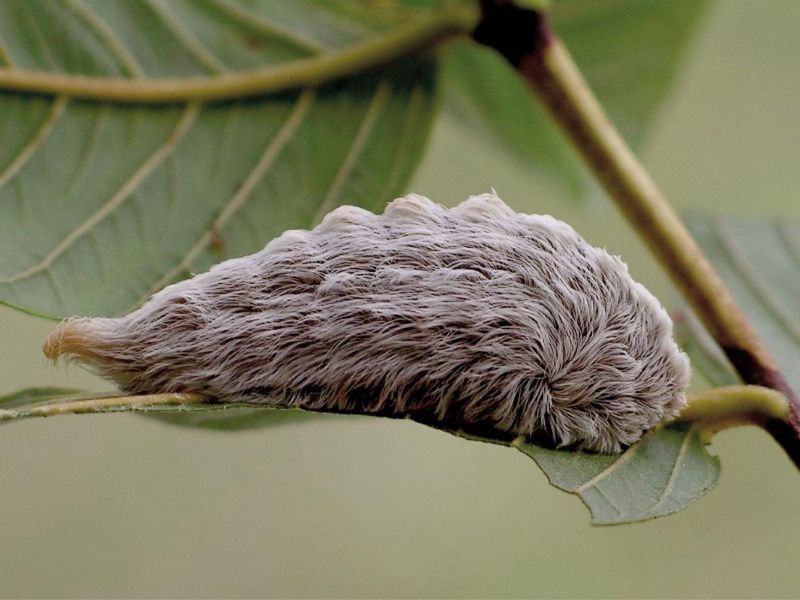
The seemingly innocent Puss Caterpillar is a hidden danger. Covered in hair-like spines, this caterpillar delivers a painful sting. Found in the Southeastern USA, it often resides on oak and citrus trees.
Contact with its spines causes severe pain, swelling, and sometimes nausea. Despite its appearance, it’s best admired from afar.
Did you know? The Puss Caterpillar eventually transforms into the Flannel Moth, yet its larval stage is far more notorious.
Tarantula Hawk Wasp
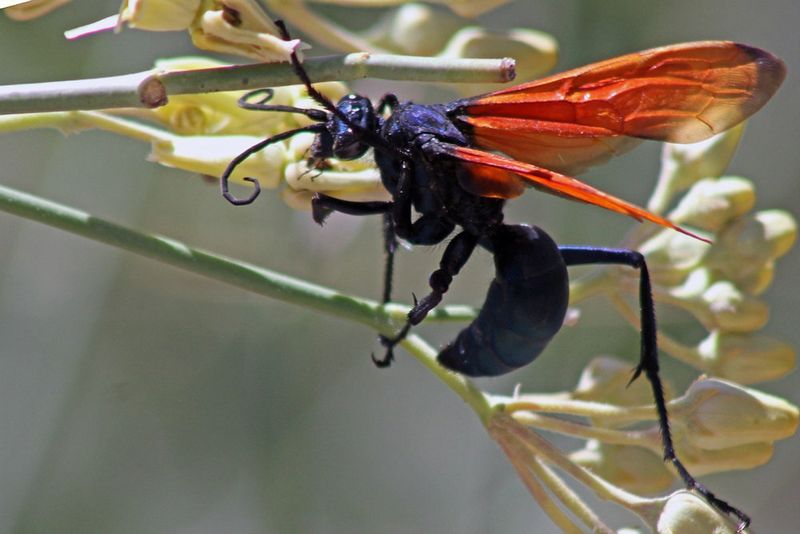
The Tarantula Hawk Wasp, with its striking orange wings, is both beautiful and fearsome. Known for hunting tarantulas, its sting is considered among the most painful insect stings.
Inhabiting the deserts of the Southwestern USA, this wasp is a marvel of nature. Its venom paralyzes prey, providing a living meal for its offspring.
While intimidating, the wasp rarely stings humans unless provoked. Fun fact: It is the state insect of New Mexico due to its unique role in the ecosystem.
Fire Ant

Fire Ants, with their fiery red appearance and aggressive nature, are a formidable presence in the Southern USA. Known for their painful sting, these ants can swarm quickly if disturbed.
Their venom causes burning sensations and can lead to allergic reactions in sensitive individuals. Often found in large mounds, they thrive in open fields and disturbed soil.
Interestingly, Fire Ants are known for their ability to form living rafts during floods, showcasing their remarkable survival tactics.
Yellowjacket

Yellowjackets, with their black and yellow stripes, are both a nuisance and a danger at picnics. These wasps are highly social and can become aggressive when defending their nests.
Found throughout the Eastern USA, their sting is painful and can trigger allergic reactions. They are often attracted to sugary foods, posing a challenge for outdoor dining.
A curious fact: Yellowjackets are beneficial predators, helping control pest insect populations despite their troublesome nature.
American Bullfrog
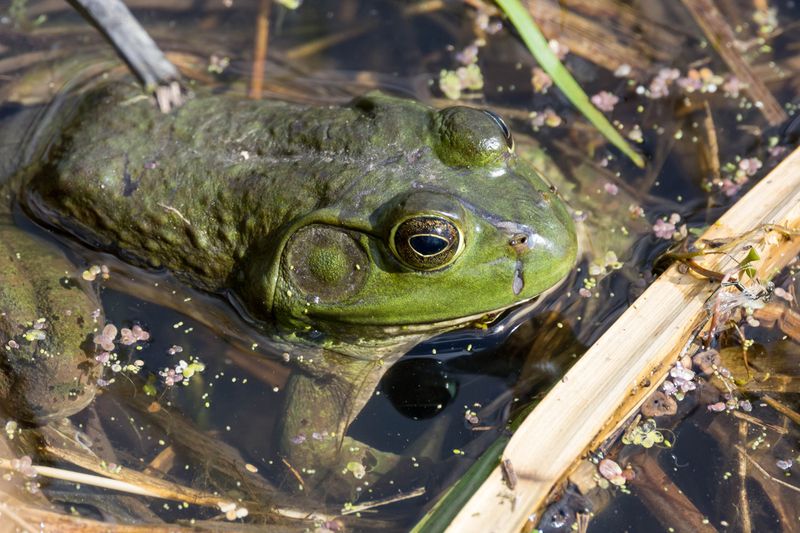
In the swamps and wetlands, the American Bullfrog might seem like an ordinary amphibian. But with an appetite for anything that fits its mouth, this large frog commands respect. Its powerful legs propel it with surprising speed.
Despite its seemingly docile nature, the bullfrog’s secret lies in its skin, which can emit toxins that deter predators. Its call, a deep, resonant croak, echoes across the water, a testament to its dominance in the marsh.
Whether by the water’s edge or deep in the reeds, crossing paths with this amphibian is unforgettable.

